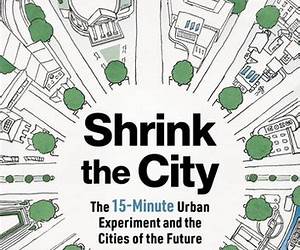Shrink the City: The 15-Minute Urban Experiment and the Cities of the Future By Natalie Whittle
Book shrink the city of houston
I received a free ARC from NetGalley and this review is voluntaryThe literature discusses the theory of the 15 minute city or an urban landscape developed to be tighter and connected More pathways for walking and cycling as a means of transpiration Introducing greener buildings or a equitable environmental Pushing for interconnectivity to allow for overall accessibility Some takeaways In the pre face there is mention of redlining in Zoning which is a discriminatory practice in housing policy however it s not touched upon enough in the rest of the literature vis a vis the impact of the policy itself on homeownership for African Americans at least as it relates to the history of real estate in the United States What it means to be born in the wrong Zipcode I found the first chapter to be chalk full of information but with the way it s presented it does ramble a bit Swinging back and forth between past and present to provide examples to highlight the idea currently being discussed per the view of the 15 minute city The rest of the chapters are written from the perspective of what has worked in other areas Provided to the reader as less of a comparative analysis but how it could work because of what s already worked elsewhere Overall it s not a bad read The concept of the 15 minute city is an interesting one for urban planning When it comes to how things are for us on the American side I m not sure how the theory would manifest if there was enough space for it What I do think though is that pieces of the theory can be introduced within our existing framework A slow or gradual change from within It won t be perfect but until we start to tackle the root problems and generate remedy for those problems the status quo will remain A couple of things I think should have been mentioned or explored further The re usage of existing buildings A good chunk of the literature discussed work from home policy or mentioned the pandemic which inevitably led some businesses to shutter their doors or change company policy so folks can work from home which potentially leaves a building empty There are complications both on the alteration and renovation side as well as building codes but for what can be re used or re purposed to meet the end goal of the 15 minute city should be included And lastly unless I missed it I don t believe accessibility for those with disabilities was mentioned which ironically accessibility is the heart of the 15 minute city policy Can t tell you how many older buildings I ve walked into without an access ramp for those with wheelchairs or a bathroom that doesn t provide handrails or a turning radius in the bathroom for a wheel chair user In order to have an ideal city that works for all it must include all That should be discussed a bit as part of the actual thesis statement Accessibility through inclusivity. Shrink the citynet webtools Otherwise this was well written and researched Should probably take a second look to see if it could be organized a little better but it was very informative Paperback
| Shrink the City: The 15-Minute Urban Experiment and the Cities of the Future By Natalie Whittle |
| 1891011898 |
| 9781891011894 |
| English |
| 192 |
| Paperback |
| book shrink the city of chicago |
| book shrink the city of houston |
| book shrink the city of atlanta |
| book shrink the city pdf |
| book shrink wrap machine |
| book shrink wrap |
| book shrink wrap service near me |
| shrink the city book review |
| shrink the city book pdf |
| shrink the city book summary |
| shrink the city book club questions |
| shrink the city book series |
| handbook on shrinking cities |
| shrinking cities def simple |
| shrinking city definition deutsch |
 .
.